March 2024
March 26, 2024
Hear how to handle your boat
Released in 1961 as part of the "Carlton Hear How Series."The series started off with fairly mundane topics such as how to handle your boat, how to be a better bowler, how to take better photographs, etc. But as sales lagged (surely because of the dull topics) Carlton introduced more controversial topics such as "Hear how to achieve sexual harmony in marriage" and "Hear how to tell your children the facts of life."
The strategy didn't work, and the series was discontinued after 1961.
More info: bsnpubs.com
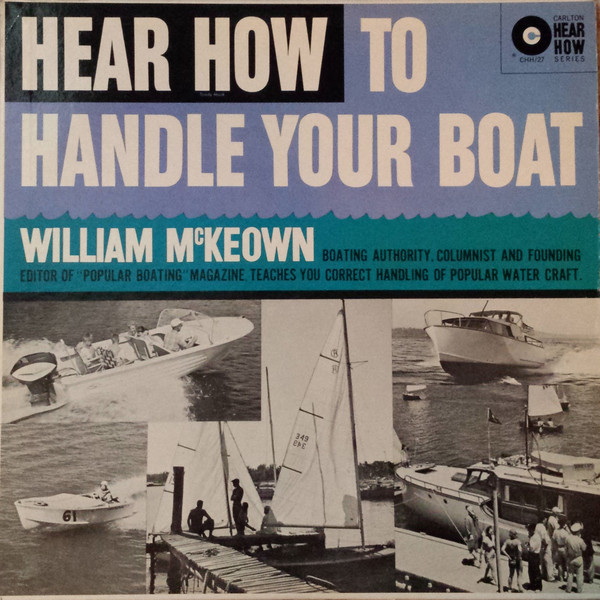
Posted By: Alex - Tue Mar 26, 2024 -
Comments (3)
Category: Boats, 1960s
Ashkasha
Ashkasha from Lara Maltz on Vimeo.
Posted By: Paul - Tue Mar 26, 2024 -
Comments (0)
Category: Body Modifications, Oceans and Maritime Pursuits, Surrealism, Stop-motion Animation, Psychedelic
March 25, 2024
An Upside-Down Experiment
In 1950, graduate student Fred Snyder of the University of Wichita spent 30 days wearing special glasses that inverted his vision. It was part of an experiment designed by Dr. N.H. Pronko, head of the psychology department, to see if a person could adapt to seeing everything upside-down. The answer was that, yes, Snyder gradually adapted to inverted vision. And when the experiment ended he had to re-adapt to seeing the world right-side-up.Snyder and Pronko described the experiment in their 1952 book, Vision with Spatial Inversion. From the book's intro:
Such an experiment is out of the question, of course. Yet another experiment was made: a young man was persuaded to wear inverting lenses for 30 days, and his experiences are reported here. His continued progress, after an initial upset, suggests that new perceptions do develop in the same way as the original perceptions did. Life situations suggest the same thing. Dentists learn to work via a mirror in the patient's mouth until the action is automatic. In the early days of television, cameramen had to "pan" their cameras with a reversed view. Later the image in the camera was corrected to correspond with the scene being panned. The changeover caused considerable confusion to cameramen until they learned appropriate visual-motor coordinations. Fred Snyder, the subject of our upside-down experiment, found himself in a similar predicament, at least for a time.
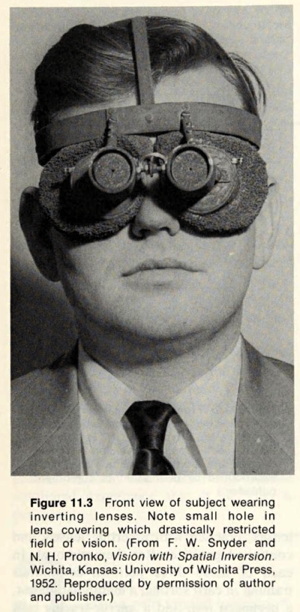
Images from Life - Sep 18, 1950:




"Graduate student Fred Snyder falling down after removing special eyeglasses that reverse and invert everything he sees. Immediately before removing glasses he rode a bicycle with perfect control along sidewalk in Central Park."
Posted By: Alex - Mon Mar 25, 2024 -
Comments (2)
Category: Experiments, 1950s, Eyes and Vision
That’s a Lot of Lobster Rolls
Source.
Posted By: Paul - Mon Mar 25, 2024 -
Comments (0)
Category: Excess, Overkill, Hyperbole and Too Much Is Not Enough, Food, Oceans and Maritime Pursuits, 1920s
March 24, 2024
Defecation relief unit for aeroplane personnel
How do fighter pilots poop while in the air? I think the answer is that they try very hard not to, because if they have to go, they're going in their flight suit. Back in the 1950s Constantin Paul Lent, et al., tried to come up with an alternative. From their patent (No. 2,749,558):Comparatively speaking it is an easy matter to provide adequate latrines for the men in the forces on land and sea. When the time comes to eliminate, one just walks to the nearest comfort station. But in the Air Force the problem of elimination can not be always solved that easily especially by aviation pilots...
The applicants are cognizant that there are relief tubes provided on most all jet planes for urinating, but no single seat aircraft is equipped with a safe and sure means for defecation. When the pilot of the jet, due to accident or enemy action needs to eliminate, the problem of defecation becomes acute. The pilot must wait until he lands his craft; and quite often he must remain aloft for a considerable length of time before he has a chance to visit a comfort station on the ground. In many cases due to the physiological and psychological effects produced on the pilot by enemy action, he is forced to eliminate even before he has a chance to land his plane.

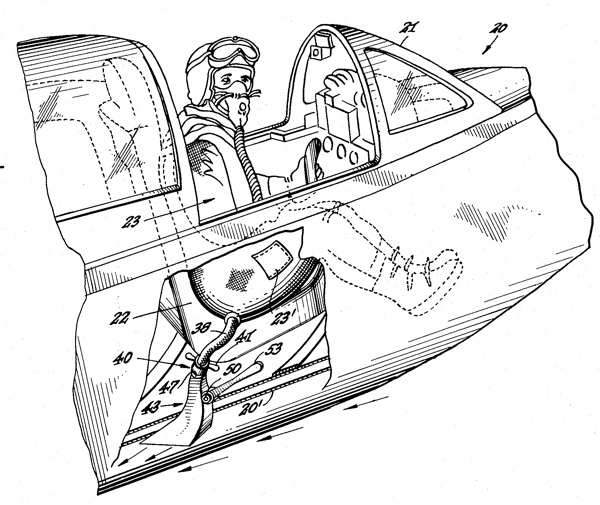
Posted By: Alex - Sun Mar 24, 2024 -
Comments (0)
Category: Flight, Patents, Excrement, Air Travel and Airlines, 1950s
Artwork Khrushchev Probably Would Not Have Liked 55
The artist's Wikipedia page.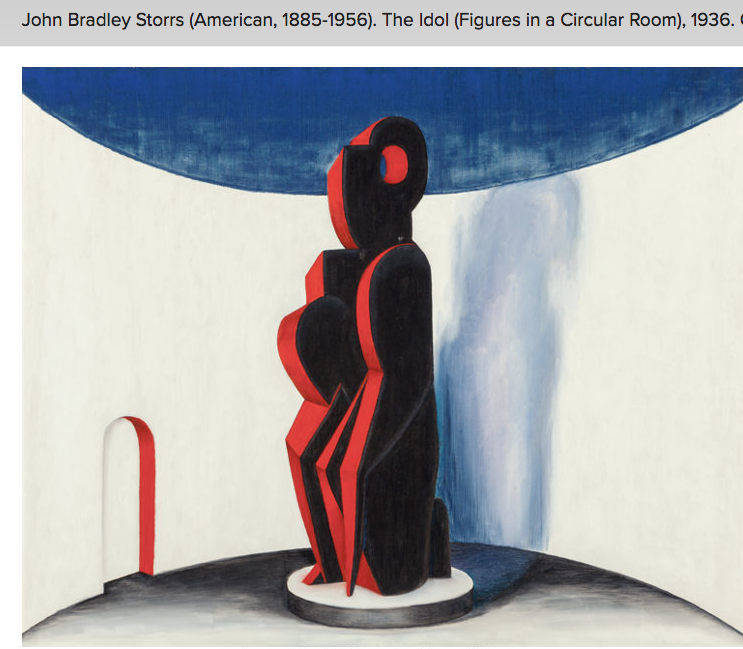
Posted By: Paul - Sun Mar 24, 2024 -
Comments (0)
Category: Art, Avant Garde, 1930s
March 23, 2024
Python meat as the food of the future
Python meat is emerging as a new contender for the food of the future.A report recently published in the journal Nature argues that python meat is potentially the most sustainable source of protein because "In terms of food and protein conversion ratios, pythons outperform all mainstream agricultural species studied to date." In other words, pythons convert most of what they eat directly into meat on their body.
The authors also make the case that farming pythons is more ethical than farming chickens or cows because "Pythons don’t have the same cognitive capacity and choose to remain inactive in small confined spaces when they don’t need to find food."
More info: Nature, New Scientist
People on YouTube who have tried python uniformly report that it's chewy. So grinding it up into a burger might be the way to go.
Posted By: Alex - Sat Mar 23, 2024 -
Comments (2)
Category: Food, Farming
You’re the Judge
Posted By: Paul - Sat Mar 23, 2024 -
Comments (0)
Category: Awards, Prizes, Competitions and Contests, Domestic, Food, Advertising, Teenagers, 1960s
March 22, 2024
Working on Sunday
The UK's Shops Act made it illegal to operate a shop on Sunday... unless one was Jewish (since the Jewish observed the sabbath on Saturday). So business owner Mike Robertson figured that to open his stores on Sunday he simply had to make his staff convert to Judaism.The Shops Act had other oddities. According to the London Telegraph, a shop could stay open if it was "in an officially designated 'holiday resort area'" or if it restricted sales to "certain kinds of perishable goods, like fruit, flowers and vegetables; medical and surgical appliances, newspapers, cigarettes and refreshments."

Bristol Western Daily Press - Mar 8, 1977
Posted By: Alex - Fri Mar 22, 2024 -
Comments (2)
Category: Business, Law, Religion, 1970s
The Venice Surfestival
This celebration ran for a number of years. And of course, there had to be a queen each year.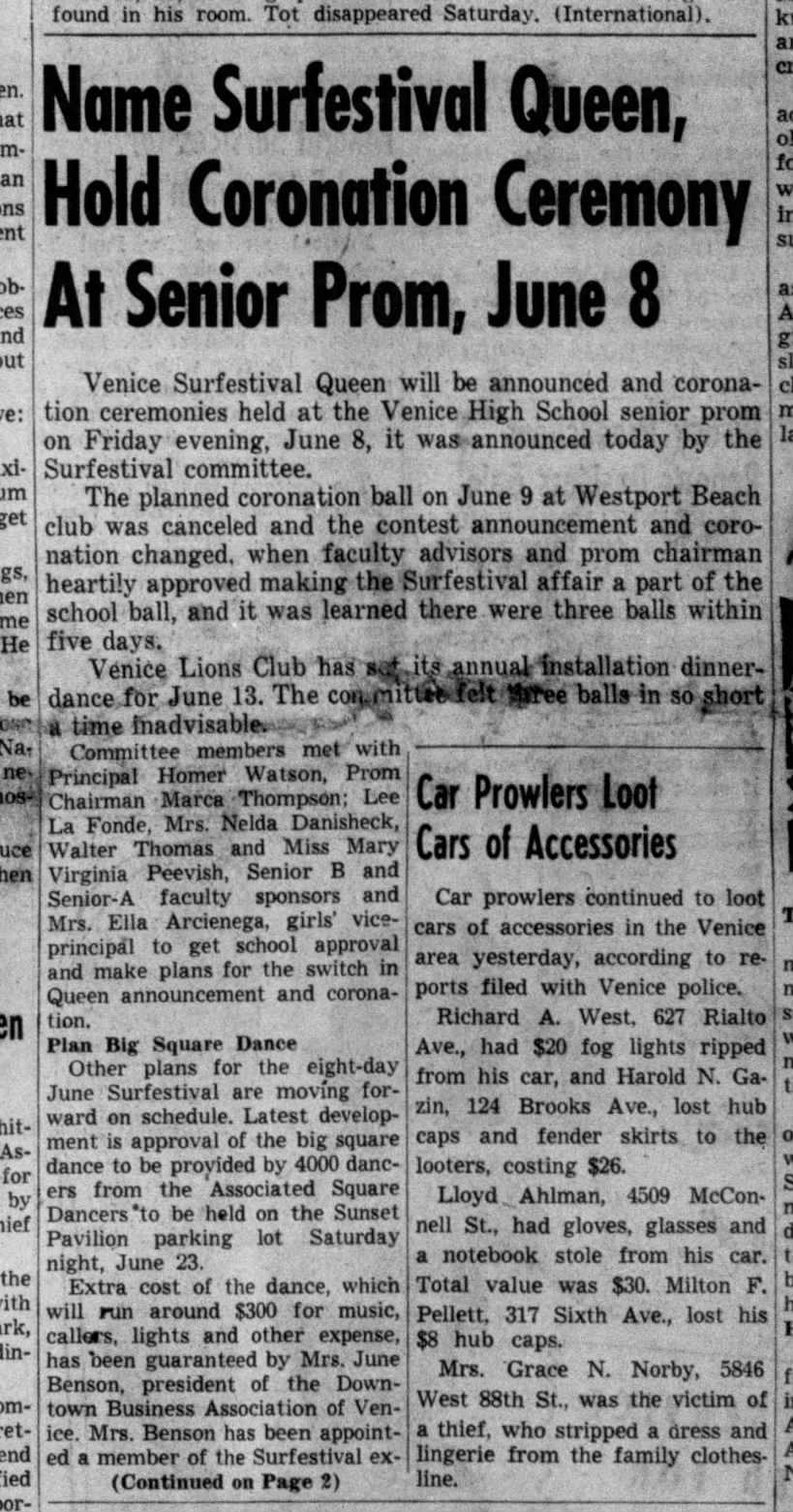
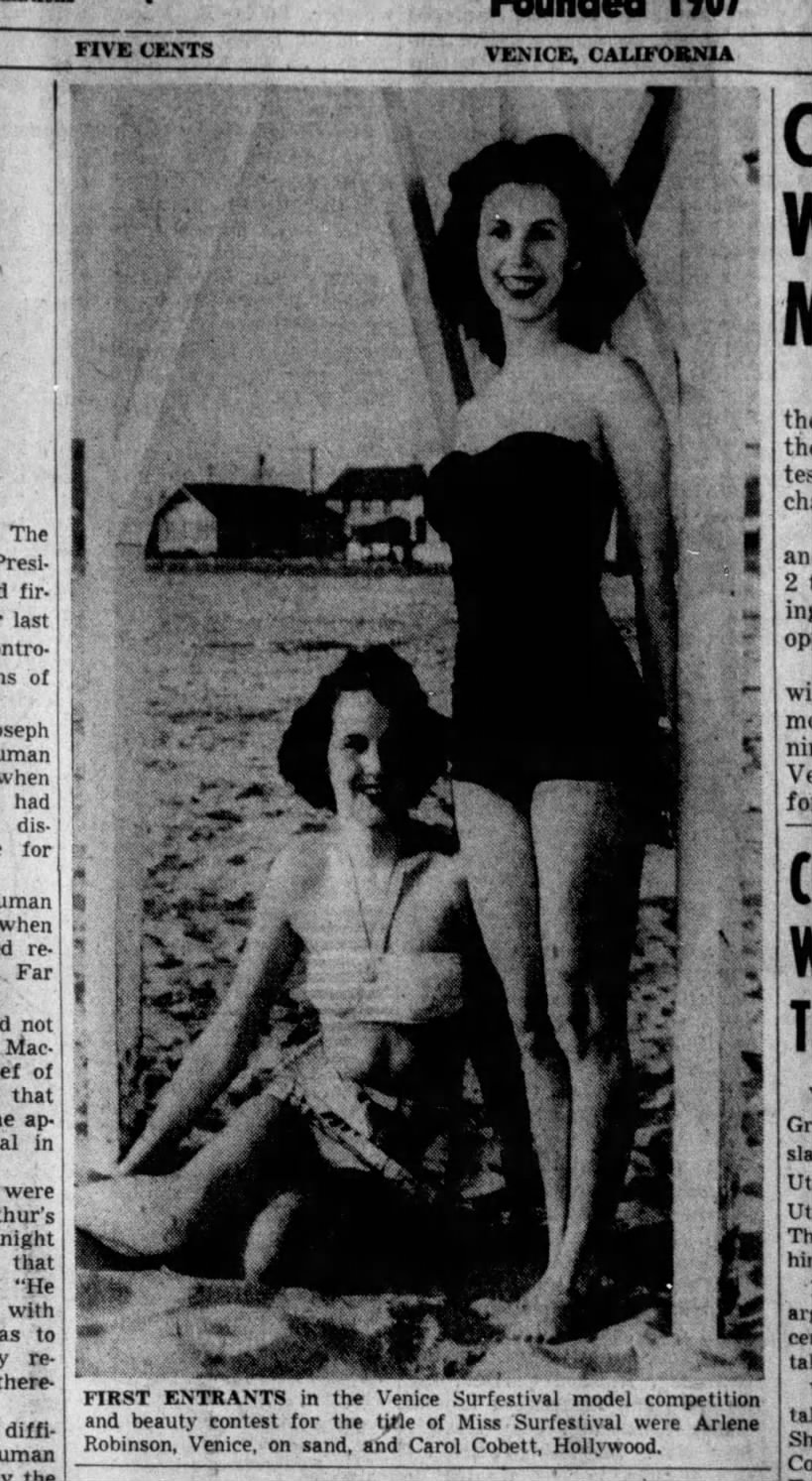
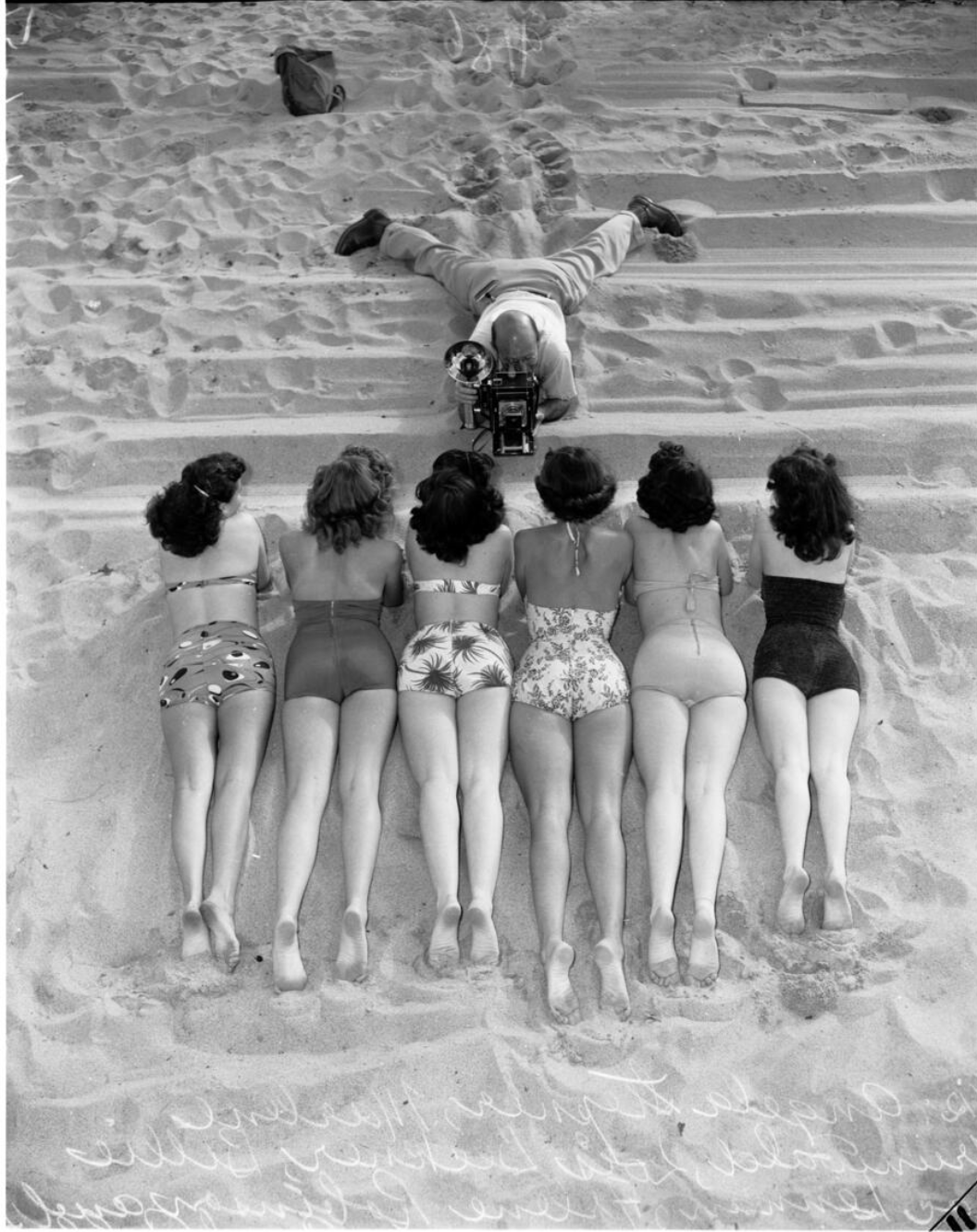
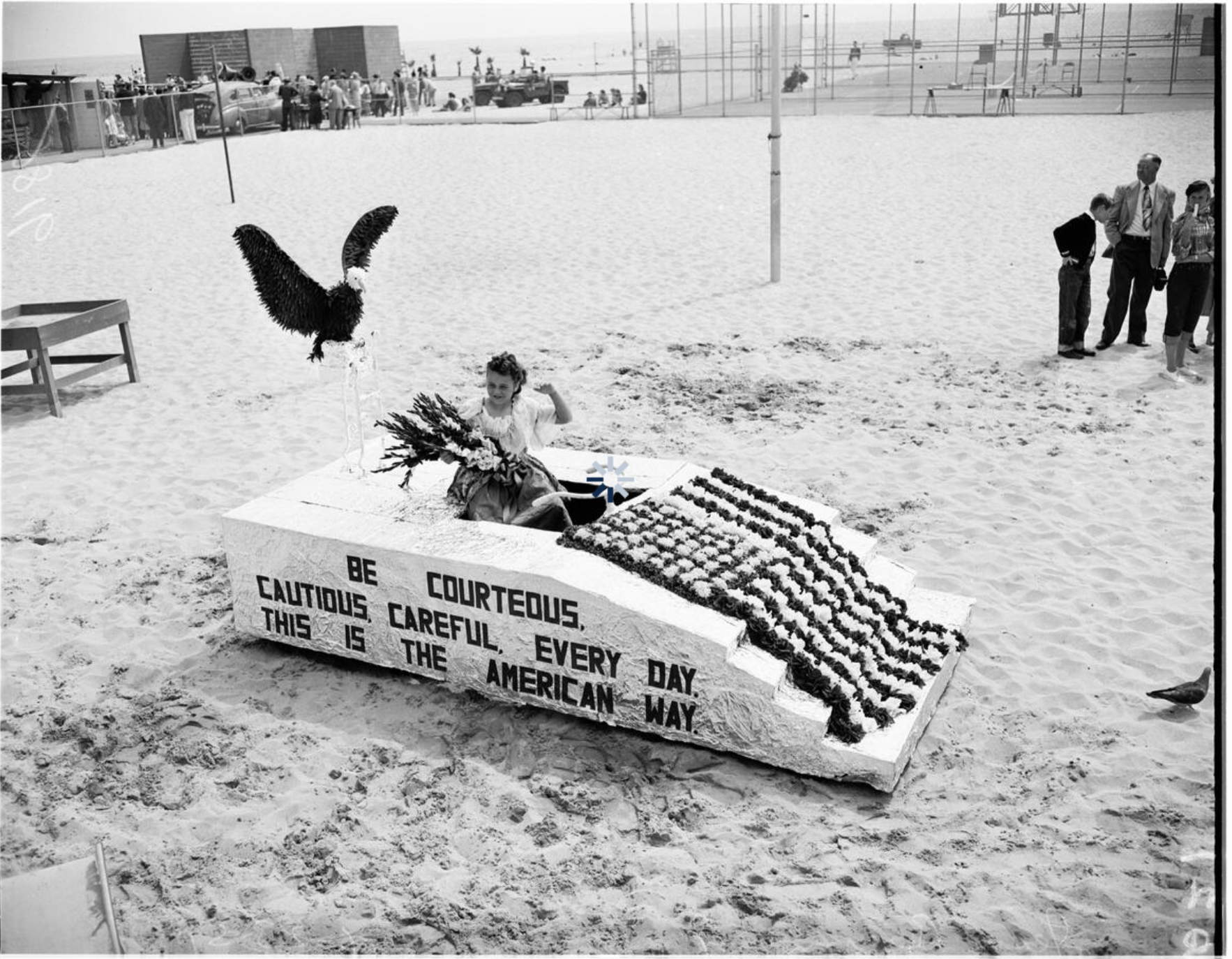


Posted By: Paul - Fri Mar 22, 2024 -
Comments (0)
Category: Beauty, Ugliness and Other Aesthetic Issues, Oceans and Maritime Pursuits, Parades and Festivals, Regionalism, Twentieth Century
| Get WU Posts by Email | |
|---|---|

| Who We Are |
|---|
| Alex Boese Alex is the creator and curator of the Museum of Hoaxes. He's also the author of various weird, non-fiction books such as Elephants on Acid. Paul Di Filippo Paul has been paid to put weird ideas into fictional form for over thirty years, in his career as a noted science fiction writer. He has recently begun blogging on many curious topics with three fellow writers at The Inferior 4+1. Chuck Shepherd Chuck is the purveyor of News of the Weird, the syndicated column which for decades has set the gold-standard for reporting on oddities and the bizarre. Our banner was drawn by the legendary underground cartoonist Rick Altergott. Contact Us |

